How To Clean A Cast Iron Pan (Without All The Mystery!)
This post may contain affiliate links. Read my full disclosure policy.
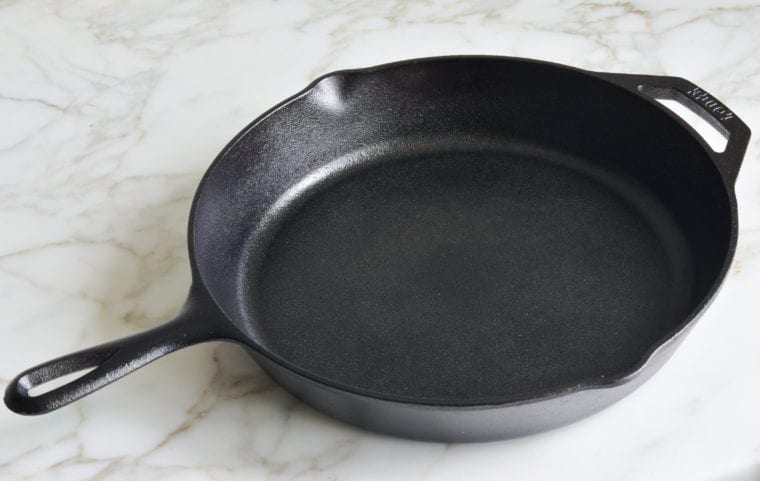
I love cooking in my cast iron skillets. Not only are they versatile, inexpensive and pretty, they last forever—in fact, the more you use them, the better they get. Well-cared-for cast iron pans have a natural, non-stick finish and, unlike most nonstick pans, you can use any utensils you like, even metal, as there is no chemical coating to damage. They can also be used on any cooking surface, even the grill. However, cast iron does require a little TLC when cleaning to maintain the non-stick coating, known as the “seasoning,” and also to prevent rusting. But if you take good care of your cast iron, it will perform beautifully and last long enough to pass on to the next generation, just like a well-loved family recipe. There’s a lot of mystery around how to clean a cast iron pan, but it really is easy—I promise!
What You’ll Need To Clean A Cast Iron Pan
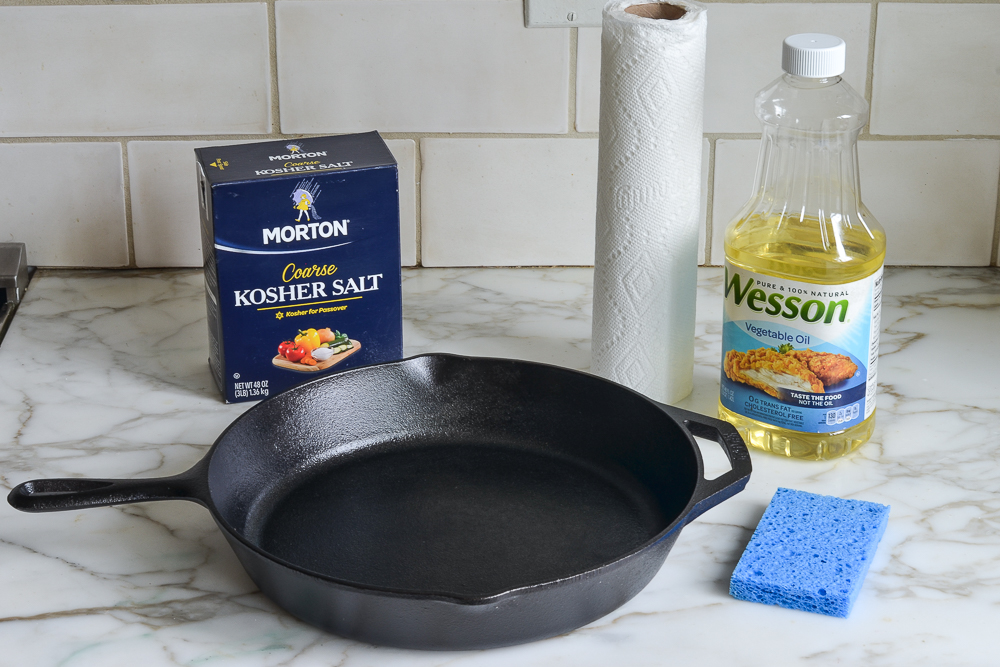
To clean your cast iron pan, you’ll need a clean dishtowel or paper towel, a soft sponge, coarse salt (if necessary), and a bit of vegetable oil.
Step-by-Step Instructions
After you’ve used your skillet, use a sponge to scrub it with water. But don’t let it soak in water, as this can cause rusting.
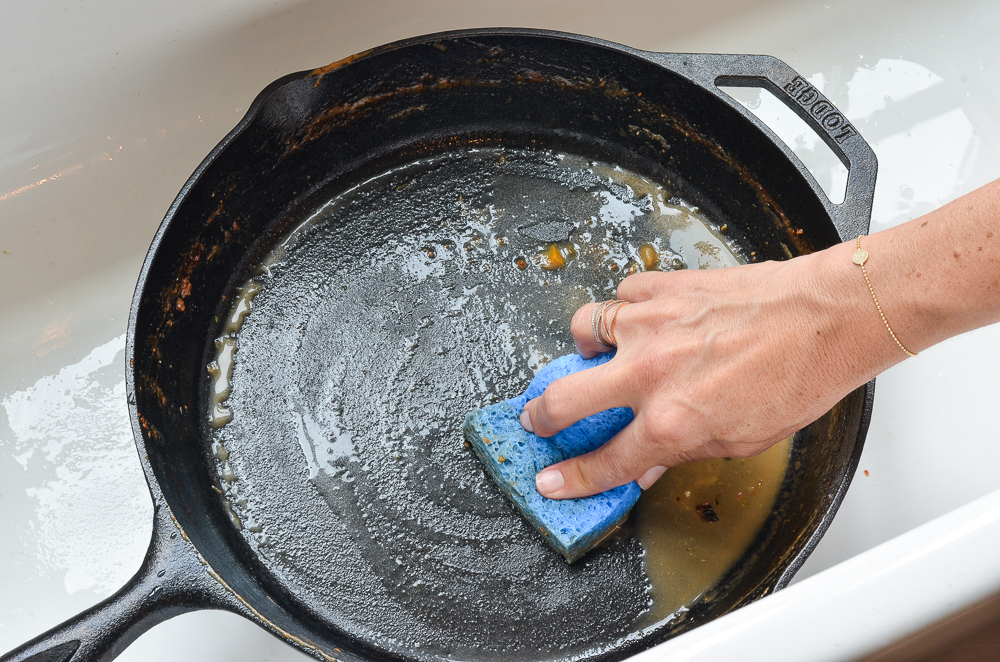
If it still needs a bit more attention, add some kosher salt to the pan and scrub with a damp sponge. The salt acts an abrasive cleaner without disturbing the seasoning.
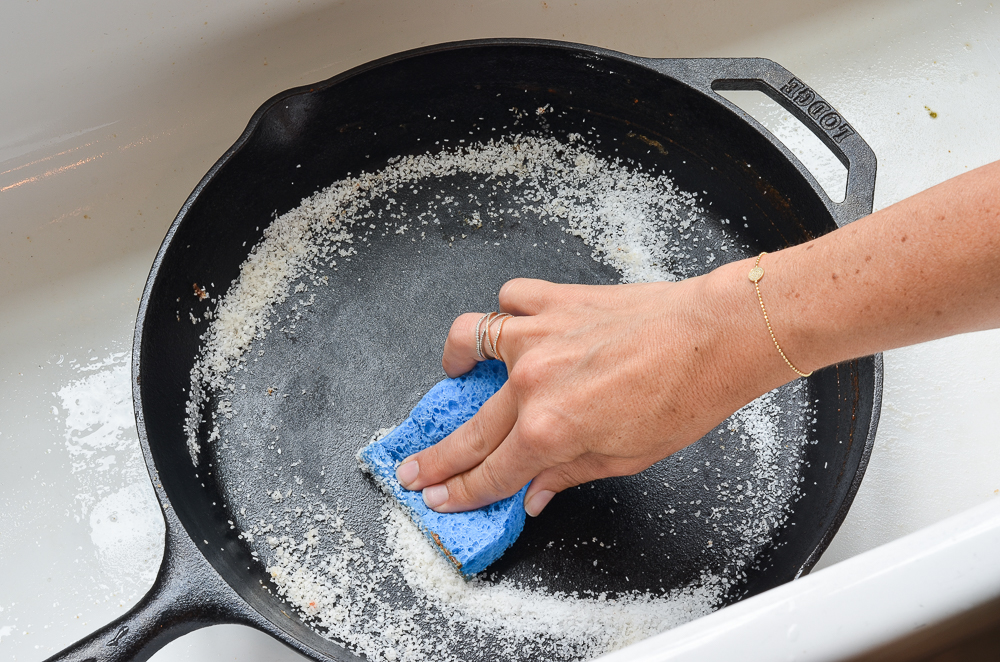
If there are still stubborn bits clinging to the pan, try bringing just a bit of water to boil in the skillet. Let it simmer until the water evaporates and then wipe out or scrub the pan again. Soap isn’t usually necessary, but contrary to popular belief, a little mild detergent won’t strip the seasoning. (Just stay away from dishwashers and metal scouring pads!) Once the skillet is cleaned to your satisfaction, rinse it well and then set it on the stove over medium heat for a few minutes to dry.
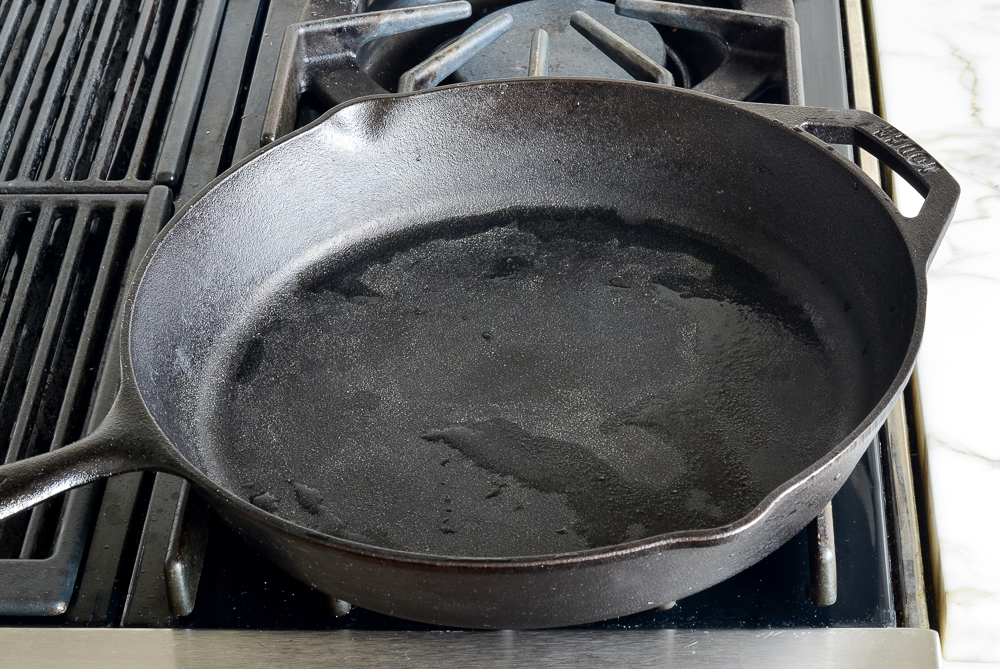
Finally, when the skillet is completely dry and still warm, use a cloth or paper towel to coat it very lightly with vegetable oil (you’ll need about 1/2 teaspoon for a 10-inch pan).
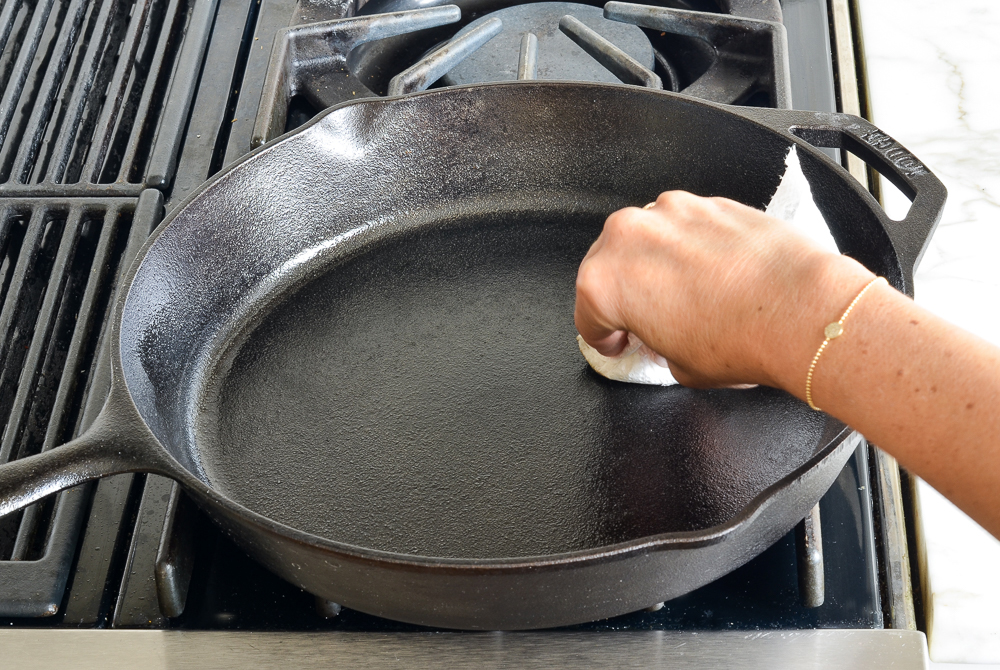
Continue to wipe the surface with oiled paper towels until it looks dark and smooth, and no oil residue remains (I rub the handle and outside of the pan too). You may notice some dark residue on your paper towel or cloth when cleaning. This is just the the baked-on cooking oil, or seasoning, reacting to foods — don’t worry, it will disappear with regular use and care. Let the pan cool completely before storing.
Note: Most new cast iron pans come seasoned and ready to use, so if you’re using your cast iron pan for the time, simply give it a quick rinse and hand dry with a dish towel. But older pans may need to be restored or seasoned before using.

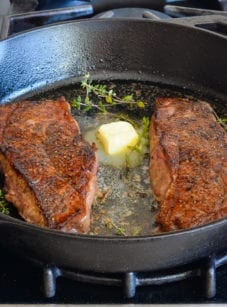
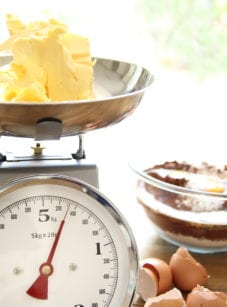
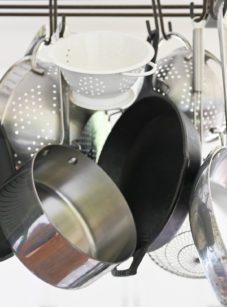
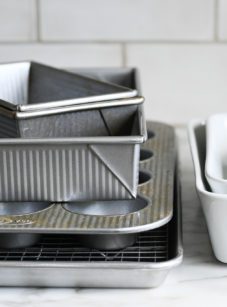
My treasured 10 inch vintage Wagner spectacularly split open with such a loud crack I thought it was a gunshot. It resulted in a slit, like the first slice into a pie, from lip edge to center. This happened while cooking a steak at high heat on my new to me (and much despised) electric stovetop. I had used this cast iron pan and this method of cooking for decades but on a gas range. Have not used the pan since and would like to know if there is any way of salvaging it or if I must say farewell to my dear old friend.
Hi Wendy, how disappointing!! I wish I knew the answer to your question, but I’m really not sure. You may want to test it out by cooking something very basic in it that won’t create too much of a mess if it leaks, or you won’t be disappointed , if it doesn’t cook well. Good luck!
I have had my unmarked Lodge cast iron for 40 years. I have done pretty much everything to that pan. I soak it when I make gravy, I use soap sometimes, I cook on high…. I have used brillo pads. I just made jalapeno corn bread in it today. I can make scrambled eggs, or over easy eggs with no sticking.
Im thinking about stripping it and starting over, so I may be throwing it in the dishwasher… Will see
I love my cast iron pan! I have usually stored it in the oven so it’s heated up with the oven to help with the seasoning. However, I forgot to remove it once when I turned on the “self cleaning” for my oven. The pan was stripped of its seasoning and down to the bare iron, I was shocked and so disappointed, I thought I ruined it! Fortunately I re-seasoned the pan and it’s perfect once again, not stored in the oven anymore!!
Well-seasoned cast iron cookware provides one of the best surfaces for cooking, since it heats foods evenly and can do just about anything — including go on the stove or in the oven. That said, it’s a notoriously tricky material to clean and maintain if you don’t know what you’re doing.
I inherited a cast iron pan from my grandmother. She kept it seasoned while she had it but unfortunately, it got a little gunky when she moved into assisted living and she wasn’t cooking anymore. It sat in the cupboard for a few years before I took it.
I can’t tell the brand because there’s a layer of “stuff” on it from the lack of use. It’s not rusty but has an almost white-ish layer all over it. It’s all over, not just limited to the inside part.
I’ve been afraid to try anything for damaging the pan. Any advice??
Hi Stacie, It sounds like it just needs to be restored. Here’s a good tutorial. Hope that helps!